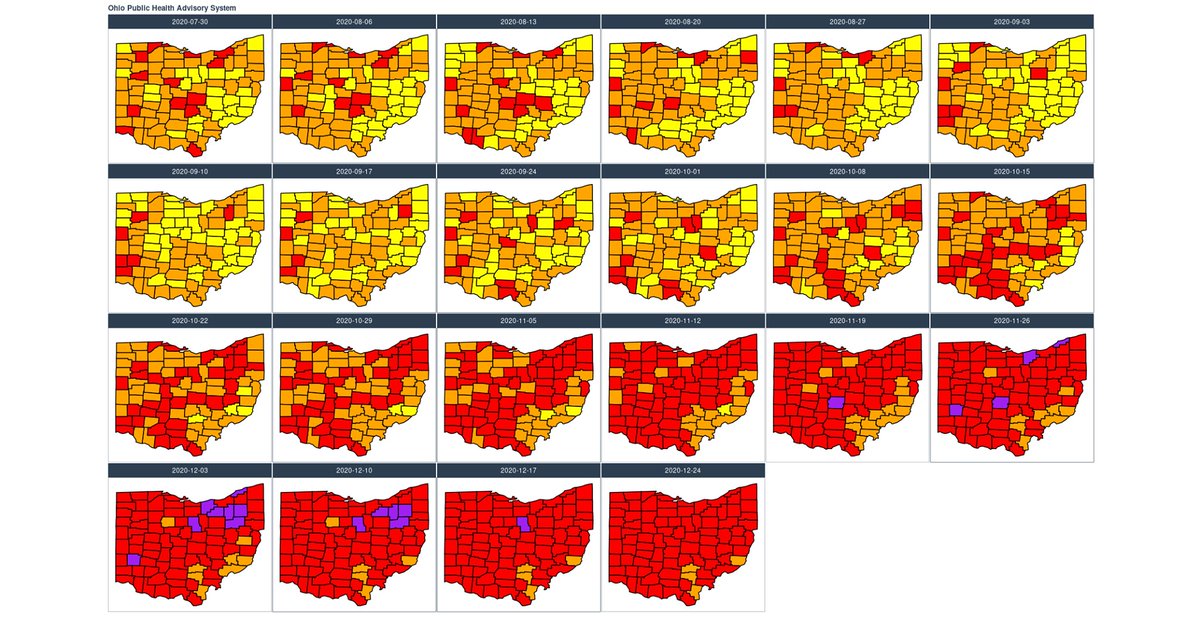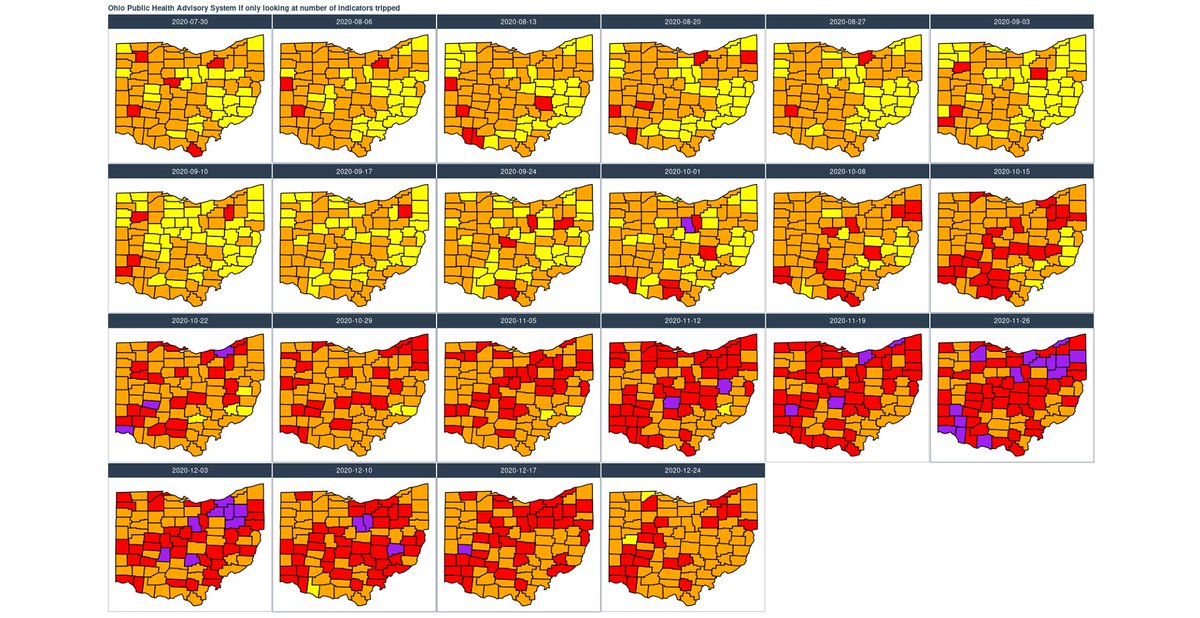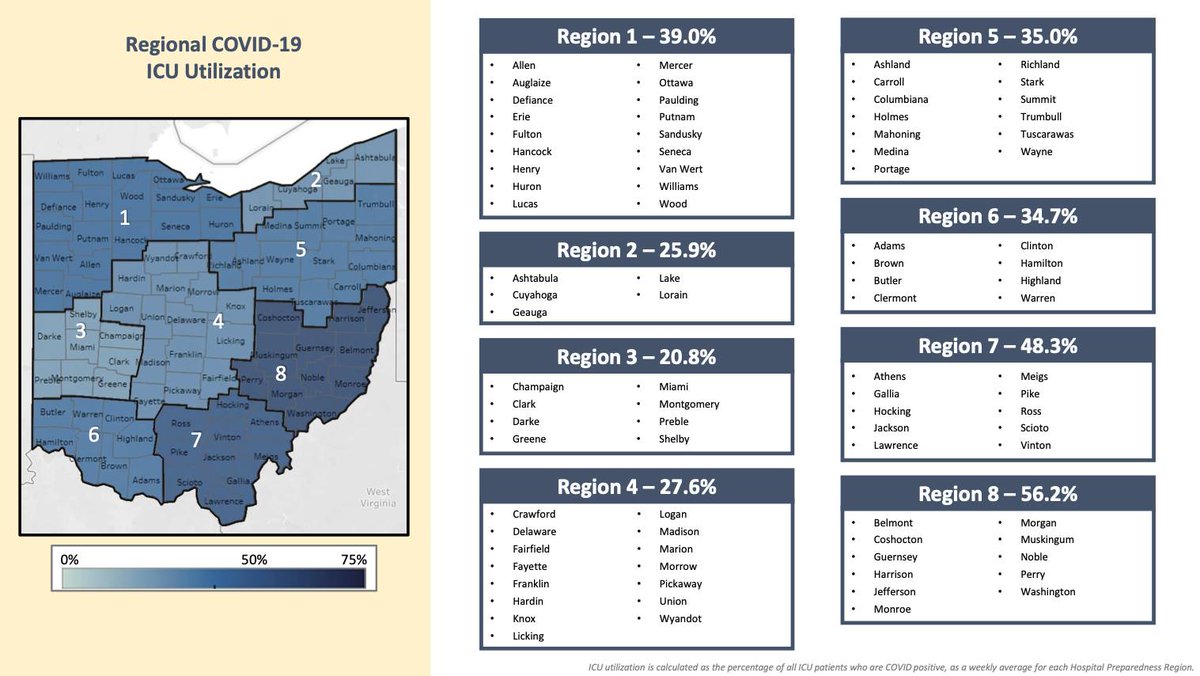
*Moving away from the OPHAS Map of Fear*
Gov. DeWine is moving us away from the Ohio Public Health Advisory system because it has gone almost entirely red now (and will, again, be completely without any purple again this week).
Gov. DeWine is moving us away from the Ohio Public Health Advisory system because it has gone almost entirely red now (and will, again, be completely without any purple again this week).
Below is Gov. DeWine's reasoning behind doing so - that he called this a 'early warning system' and that it 'told a good story.'
facebook.com/15501424/video…
facebook.com/15501424/video…
Also attached is Fort's presentations of the Map of Fear using the new rules. Those rules are - 'high incidence' maintaining red indefinitely, a 'watchlist' week for counties before turning purple, and counties remaining purple for two weeks before being allowed to return to red. 

This next image is what the OPHAS would look like without the new rules.
Notice how the OPHAS with the new rules was not an early warning system - it delayed an already delayed system by an extra week, and held on to that alarm long after the window of highest danger had passed.
Notice how the OPHAS with the new rules was not an early warning system - it delayed an already delayed system by an extra week, and held on to that alarm long after the window of highest danger had passed.
But yes, the OPHAS with the new rules did tell a nice scary 'story,' at least through the fall. It was not a true story though. If Gov. DeWine and ODH would be interested in telling the real story, and not just a story of perpetual fear -
- they would be celebrating the fact that only 21 counties should be red (not 84) and that TWO counties should actually be yellow (including Lucas County which is where Toledo is).
📢 There was a wave in November. One that did not overwhelm our hospitals. That wave has largely passed. It is past time that Gov. DeWine and ODH acknowledge that fact.
• • •
Missing some Tweet in this thread? You can try to
force a refresh




